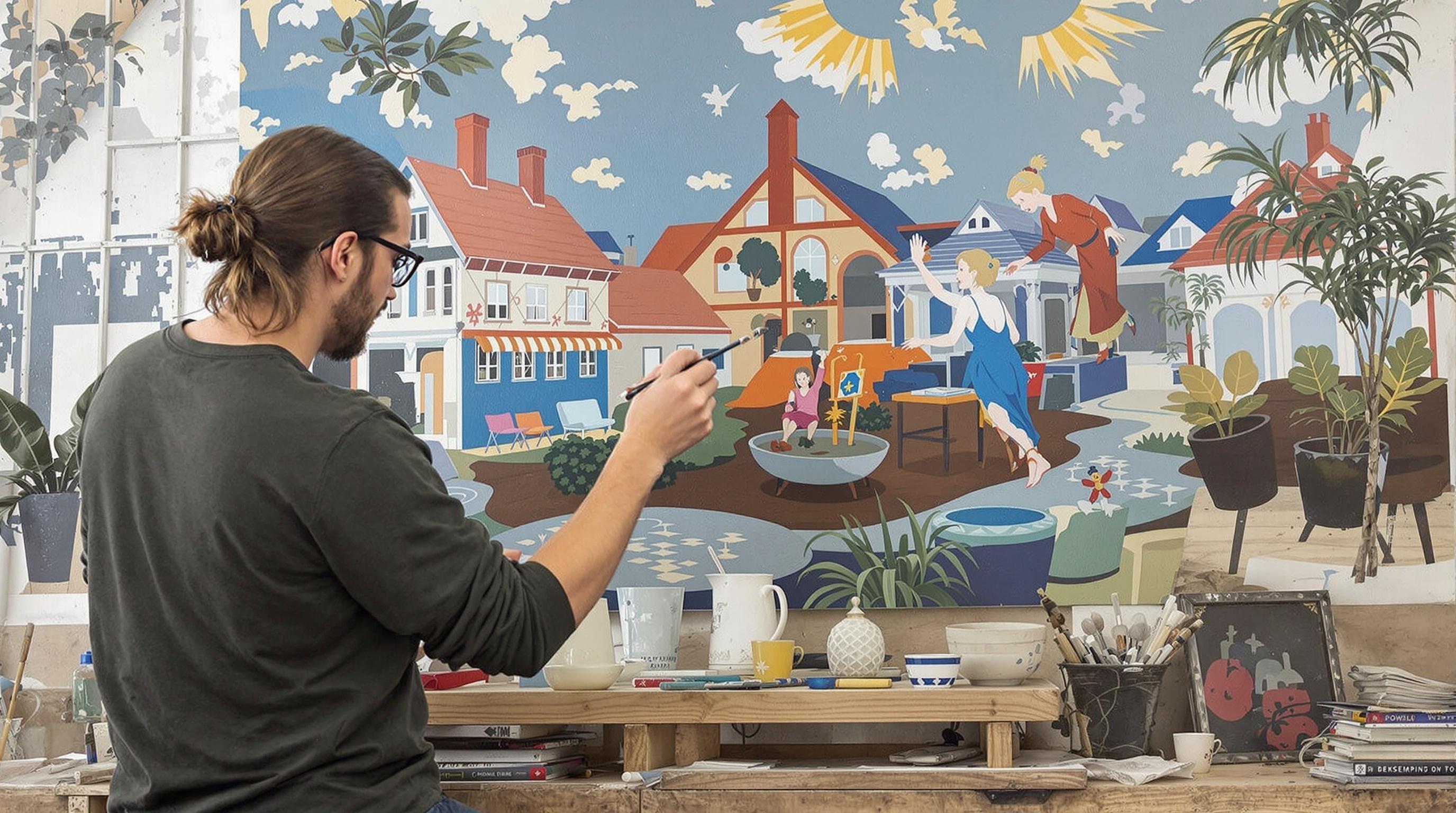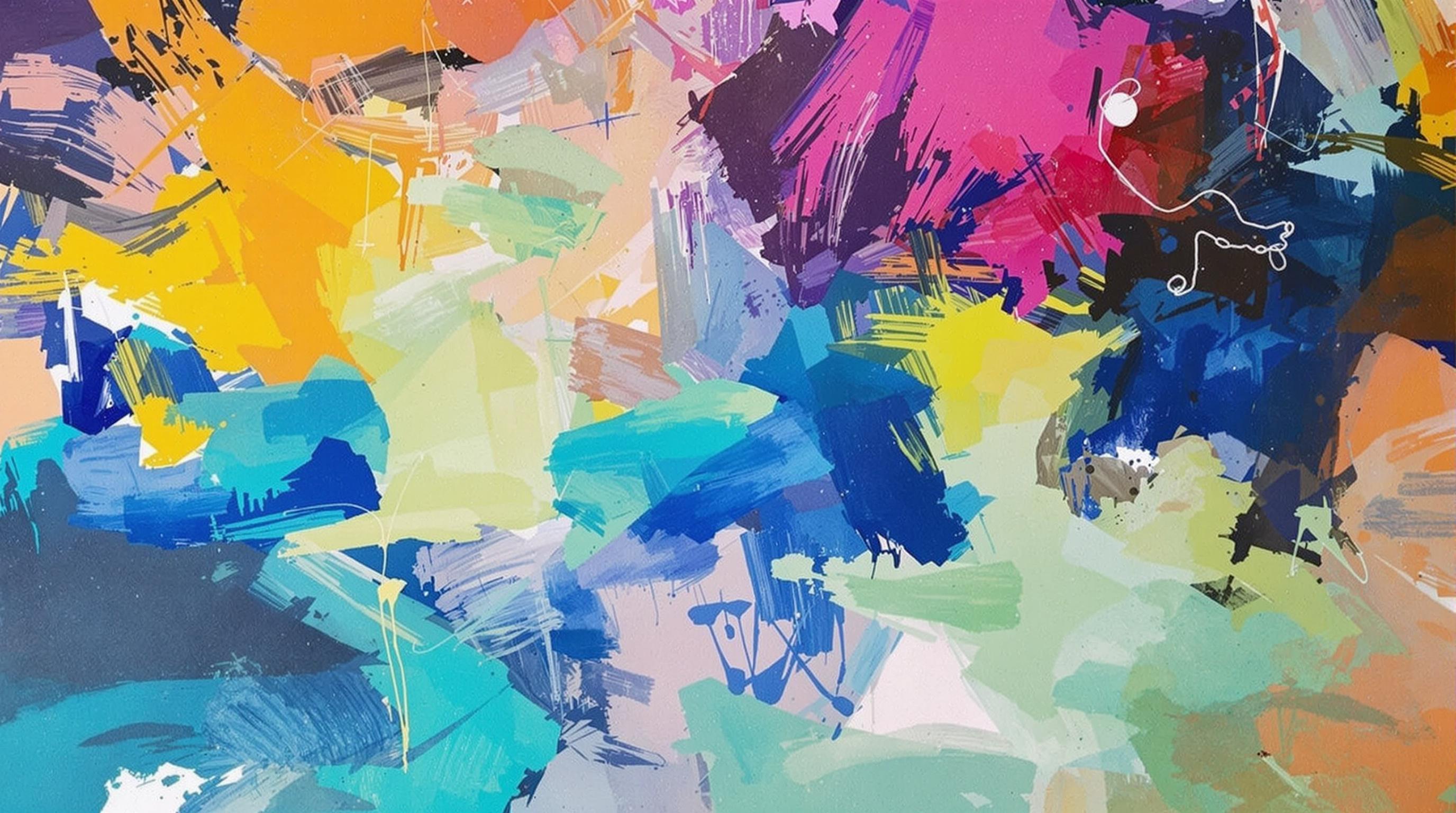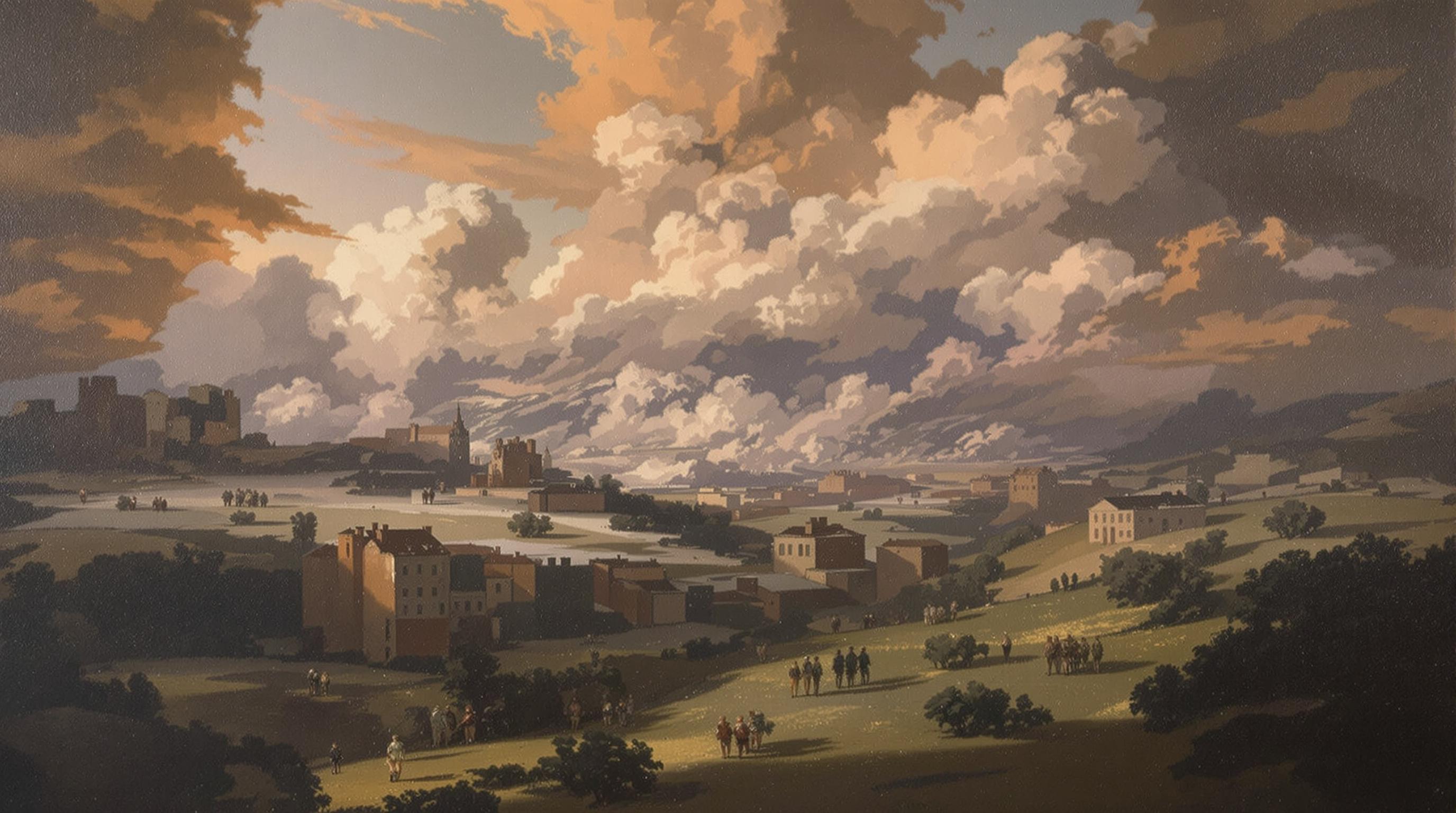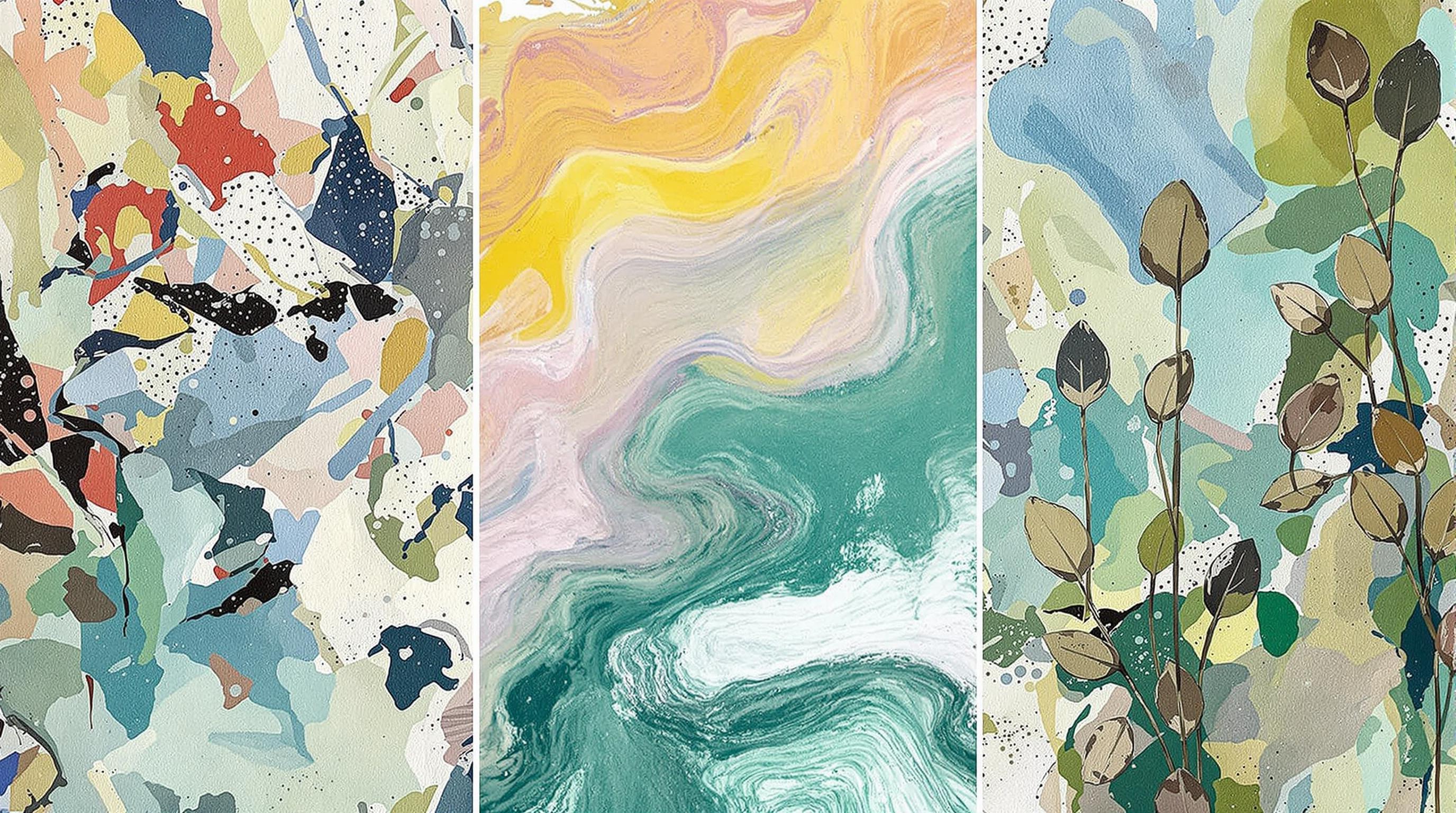Related Articles
- The Hidden Influence of Ergonomics: How Tool Design Shapes Our Physical Spaces and Daily Lives
- The Silent Influence: How Hidden Home Implements Shape Our Daily Routines and Spaces
- The Counterintuitive Role of Chaos: How Messy Tool Storage Can Lead to Unexpected Home Innovations
- Exploring the Unseen: How Audio Experiences Shape the Art of Domestic Spaces and Color Perception
- Rethinking the Mundane: How Everyday Objects are Becoming the Canvas for Modern Artistic Expression in Home Spaces
- Cultivating Chaos: The Surprising Benefits of Embracing Weeds in Your Garden Ecosystem
Reviving Forgotten Techniques: The Resurgence of Ancient Painting Methods in Contemporary Home Spaces
Reviving Forgotten Techniques: The Resurgence of Ancient Painting Methods in Contemporary Home Spaces
The revival of ancient painting methods is transforming contemporary home spaces into sanctuaries of history and artistry. This article explores the resurgence of these forgotten techniques, showcasing their modern applications, benefits, and the deep cultural significance they embody.
The Allure of Ancient Techniques
You might wonder why anyone would choose to use techniques that date back centuries when modern painting options are readily available. Well, the charm lies in the authenticity, craftsmanship, and the stories that come with each brushstroke. Imagine walking into a room that feels like it breathes history, one filled with rich textures and colors reminiscent of ancient civilizations.
A Historical Perspective
Ancient painting techniques, like fresco and tempera, have been used for millennia, gracing the walls of historic monuments and homes. According to a study by the National Endowment for the Arts, art in human history serves as a mirror to the culture of its time, and by embracing these techniques, modern homeowners can cultivate a narrative that connects the present with the past. For instance, the iconic frescoes of Pompeii have influenced artists and decorators for centuries, showcasing how art evolves while maintaining its roots.
Humble Beginnings: A Personal Journey
At the age of 25, an aspiring artist named Emma decided to explore the world of ancient techniques after a trip to Italy, where she saw fresco artists at work. It inspired her so much that she spent the next year researching, experimenting, and eventually launching a small business focused on creating custom fresco interiors. "There's something magical about applying pigments that are centuries old," she says. "It’s like breathing life into the walls; they become storytellers." Emma’s journey exemplifies how individuals can not only preserve these methods but also innovate and sell them to modern home decorators.
Eco-Friendly and Sustainable
With sustainability being a critical factor in today's design choices, ancient painting methods offer an environmentally friendly alternative. Many traditional materials, such as natural pigments, are sourced from the earth, unlike synthetic paints that often contain harmful chemicals. The global paint and coatings market is expected to reach $280 billion by 2023 (Research and Markets), but only a fraction of this accounts for eco-conscious craftsmanship. By opting for ancient methods, homeowners can contribute positively to their health, environment, and local economies.
Case Studies: Real-Life Transformations
Consider the case of a family in California who wanted to personalize their new home, which was a blank canvas. They decided to incorporate ancient Japanese sumi-e techniques into their living room. The painting featured majestic bamboo and a serene waterfall. The idea came from the husband's extensive travels, and the family recalls how guests always comment on the peaceful ambiance of the space, making it their favorite gathering spot.
Another example can be seen in an art installation at a prominent Denver museum where a new exhibit combines modern technology with traditional techniques. Here, artisans use digital tools to create a modern interpretation of ancient wall paintings, bridging the gap between the past and present. The feedback has been overwhelmingly positive, with visitors expressing a newfound appreciation for the tactile nature of painting.
Learning from Experts
While many people may be hesitant to take the plunge into ancient painting methods without guidance, various workshops and online courses are now available. According to a survey conducted by Skillshare, 72% of people are eager to learn new crafts and skills from the comfort of their homes. Imagine following a tutorial on how to mix natural pigments from vegetables and flowers and then creating a masterpiece for your living room! These learning opportunities foster a sense of community, where you can connect with like-minded individuals who share your enthusiasm for art and history.
The Myth of the Average DIYer
Let's address an amusing yet common myth: that creating ancient-inspired wall art requires a level of skill only possessed by Pablo Picasso. False! With patience, practice, and a bit of humor, anyone can tap into their inner artist. Picture this: you’re wielding a brush, coffee in one hand, giggling as your child proudly adds finger paint to your otherwise flawless fresco. A bit of chaos can lead to unique and personal creations, reminding us that art is subjective—and often, better when sprinkled with imperfection.
Modern Applications
This resurgence isn’t just limited to private homes; restaurants, boutiques, and cafes are also beginning to incorporate these techniques into their interiors. Imagine walking into a coffee shop and being enveloped in a warm patina that tells stories of ancient traditions. A recent trend analysis by “Interior Design Magazine” highlights how hospitality venues are focusing on ambience to create unforgettable experiences. The use of age-old techniques plays a critical role in establishing distinct visual narratives that entice customers.
Statistics That Speak Volumes
According to a report by Houzz, 57% of homeowners are willing to invest in art for their residences. This statistic underscores the growing appreciation for unique and personalized elements in home decor. Thus, ancient painting techniques resonate with a demographic eager to distinguish their spaces not just visually, but also culturally. As people seek authenticity more than ever, we see a shift in the conversations around style towards one that is steeped in history.
The Cultural Reconnection
Revisiting ancient painting methods is not just a trend; it’s a way for individuals to connect with diverse cultures and histories. Each technique carries a legacy and symbolism that speaks to the heritage of civilizations around the world. By integrating these methods into contemporary spaces, homeowners and artists alike invite narratives that may otherwise remain in obscurity.
Embracing the Process
Now, you might find yourself asking, "Where do I even start?" The process of exploring ancient painting techniques can be incredibly rewarding. Local art supply stores often carry natural pigments and materials specific to these age-old methods, allowing you to experiment. Start with something simple, like a small piece of canvas, and gradually create that stunning accent wall you've always dreamed of. The beauty of this journey is in the learning, the mistakes, and the triumphs along the way.
Value Beyond Aesthetics
The value of reviving forgotten techniques extends beyond mere visuals. It encapsulates a sense of belonging and community among enthusiasts. Many local groups host "art nights," where people can come together, share techniques, and revel in the joy of painting. The age-old phrase, “it takes a village,” rings true in this artistic revival, fostering connections that transcend generations.
The Road Ahead
As we move towards a more conscious approach to art and home decor, ancient techniques will undoubtedly continue to gain traction. What began as a niche interest is evolving into a robust movement driven by environmental awareness, cultural appreciation, and personal expression. According to the American Craft Council, handmade art is expected to grow by 25% in the next few years, suggesting a renewed interest in personalized, quality craftsmanship.
Final Thoughts
In a world dominated by quick solutions, the resurgence of ancient painting methods serves as a reminder of the value of slow, deliberate creation. Whether you are an aspiring DIYer, an experienced artist, or simply someone looking to introduce a sense of history into your home, there has never been a better time to explore these rich traditions. So grab your brushes, gather your pigments, and embrace the artistry that awaits—because every stroke tells a story. And your walls deserve a tale worth telling.





